Smoking doesn’t just affect your overall health—it takes a toll on your skin, too. The toxins in cigarettes speed up aging, depleting your skin’s natural elasticity and hydration. Over time, this can lead to visible signs of smoking skin damage, such as wrinkles, dullness, and uneven tone. It can also worsen existing skin conditions, making them harder to manage.
If you’ve noticed changes in your skin and you’re a smoker, it’s worth discussing options with your doctor—not just for your overall health, but for your skin’s recovery as well. The good news? Many of these effects can be improved once you quit, allowing your skin to gradually regain its natural glow.
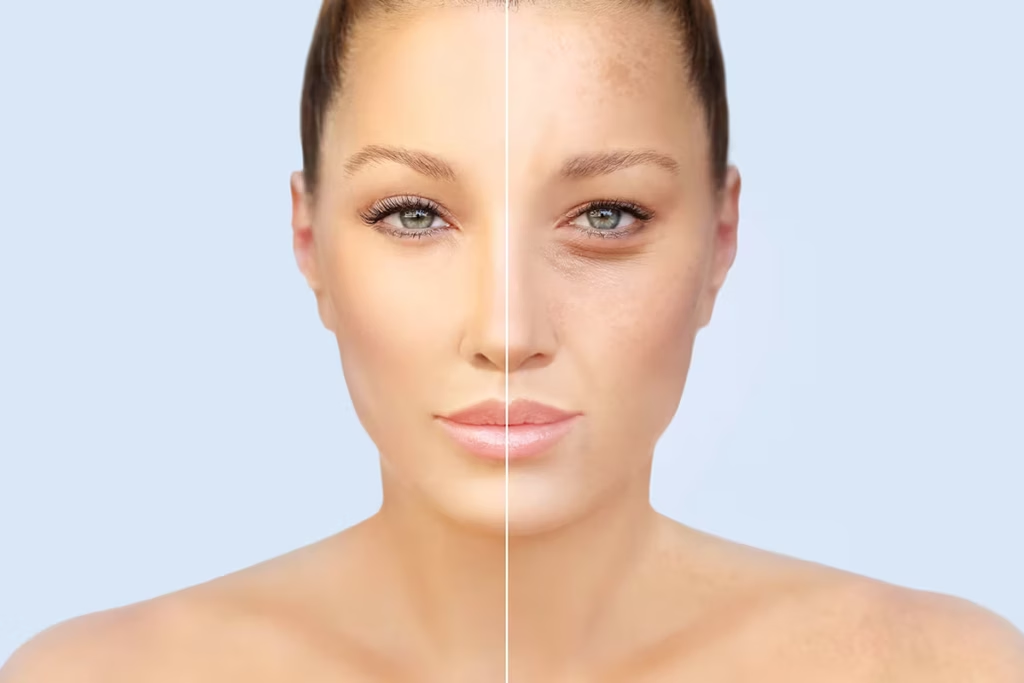
What are the Effects of tobacco on Your Skin?
Cigarettes contain toxins that create free radicals when smoked, leading to oxidative stress which restricts oxygen intake of the skin, resulting in temporary and permanent harm.
Smoking increases the chances of hair loss, oral cancer, and gum disease due to the presence of these toxins. Here are some of the most common ailments and damaging effects of smoking:
1. Early Aging and Premature Wrinkles
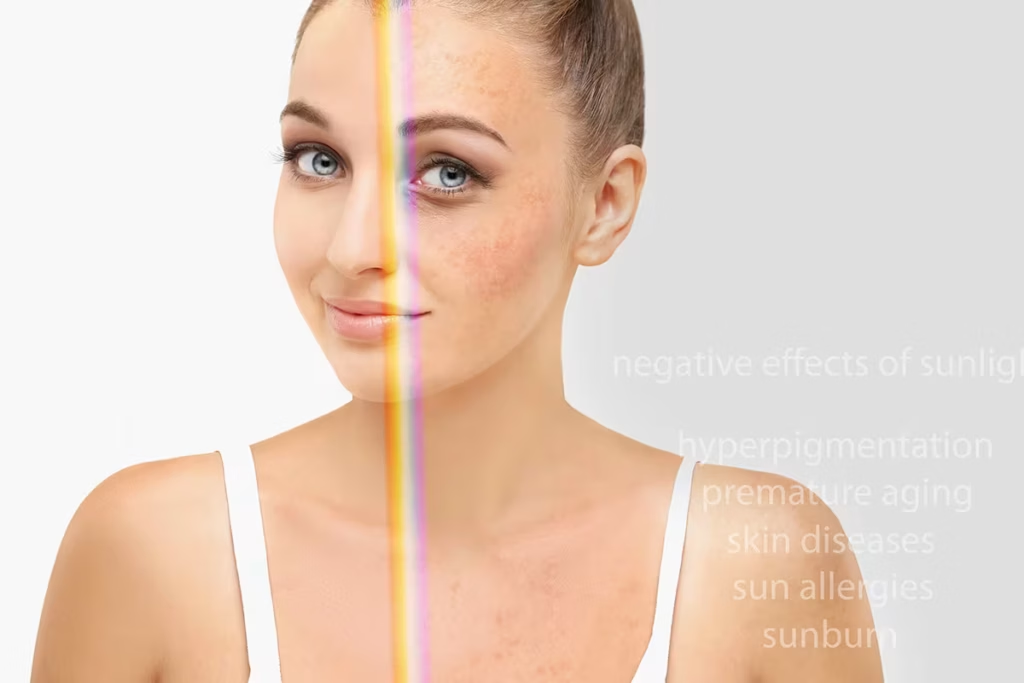
Smoking depletes collagen and elastin—proteins that keep your skin firm and youthful. As a result, smokers develop deeper wrinkles around their eyes, lips, and forehead earlier than non-smokers.
🔎 Key Fact: Research shows smokers look up to 10 years older than non-smokers.
How to Fix It:
- Consider professional treatments like microneedling or facelift surgery for long-term improvement.
- Quit smoking to slow down further collagen loss.
- Use skincare products with retinol and peptides to boost collagen production.
2. Skin Pigmentation
Nicotine reduces blood flow, depriving your skin of oxygen and nutrients. This leads to dullness, grayish undertones, and dark spots, particularly around the mouth and fingers.
🔎 Key Fact: Smoking increases melanin production, which can cause permanent dark patches on the skin.
How to Fix It:
- Use antioxidant-rich serums like vitamin C to brighten your complexion.
- Try chemical peels or laser therapy to fade pigmentation.
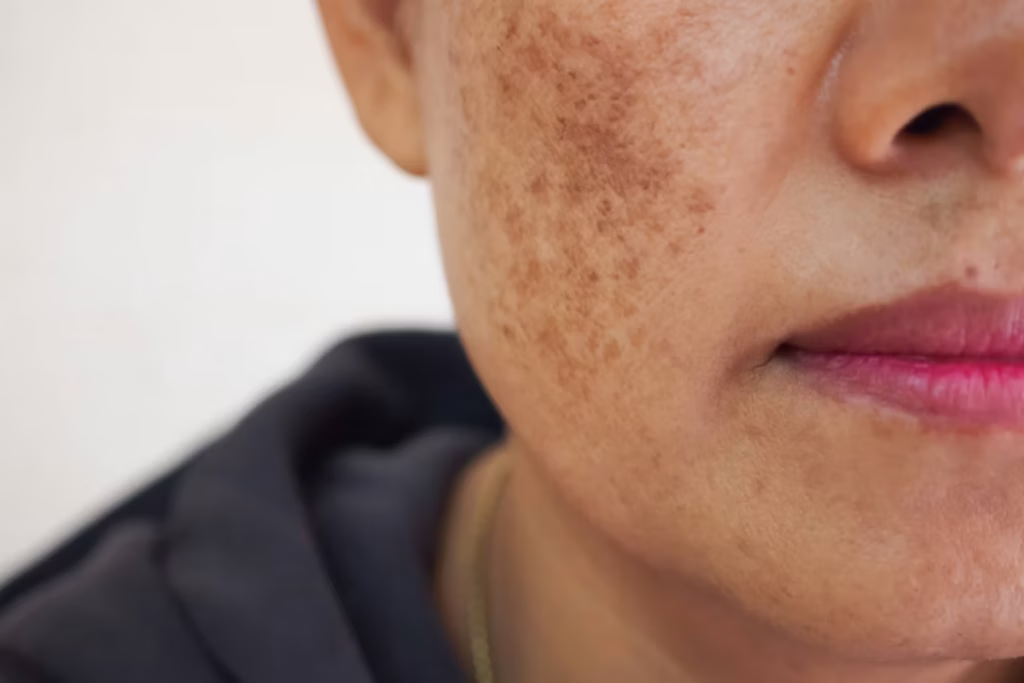
3. Wound Healing
Smoking constricts blood vessels, slowing down your body’s ability to heal wounds, cuts, and acne scars. This makes smokers more prone to infections and poor scar healing.
🔎 Key Fact: Many surgeons advise quitting smoking weeks before surgery to prevent complications.
How to Fix It:
- If you’re considering cosmetic surgery, quitting smoking can significantly improve healing.
- Eat a collagen-boosting diet rich in protein, zinc, and vitamins A & C.
4. Psoriasis
Psoriasis is a chronic skin inflammation disorder characterized by patches of scaly, itchy skin. Light skin tones may be red, pink, or silvery in color when affected, while dark skin tones might present as gray scales with dark brown or violet hues.
Cigarette use has been linked to an increased risk of psoriasis – the more someone smokes, the more likely they are to develop the condition.
Nicotine, which is present in cigarettes, could be responsible for the connection between psoriasis and smoking. It may have an impact on the skin’s inflammation, immune system, and cell growth. This could be beneficial or detrimental to psoriasis.
Smokers’ skin may be more likely to experience palmoplantar pustulosis, an inflammatory condition involving painful blisters on the hands and feet similar to psoriasis that may come back over time.

5. Acne Inversa
Acne inversa (also known as Hidradenitis suppurativa) is a relatively common inflammatory skin condition that usually causes sores to develop in areas where skin rubs against the skin such as the armpits, groin, and under the breasts.
According to one study, cigarette smoking increases the odds of developing Acne Inversa significantly more than other environmental factors.
6. Vasculitis
Vasculitis is a group of autoimmune diseases where blood vessels become narrowed and inflamed, making it harder for the body to deliver blood to the heart and other organs. Studies found that smoking greatly increases your risk of developing Buerger’s disease
Buerger’s disease symptoms may include:
- Pale, red, or bluish fingers or toes
- Tissue damage or gangrene (tissue decay)
- Painful sores on the fingers or toes
In addition, you may feel coldness in your hands or feet and/or experience pain in any of those body parts.
7. Eczema
Smoking increases your chances of getting atopic dermatitis (the most common type of eczema) and hand eczema, which shows up as dry, itchy patches of inflamed skin that are red on light skin tones and brown on dark skin tones.
Not only do people exposed to secondhand smoke have an increased risk of getting hand eczema, but a study also found that children exposed to secondhand smoke as children had higher instances of developing atopic skin conditions such as eczema during their teenage years.
8. Palmar Telangiectasia (Spider Veins)
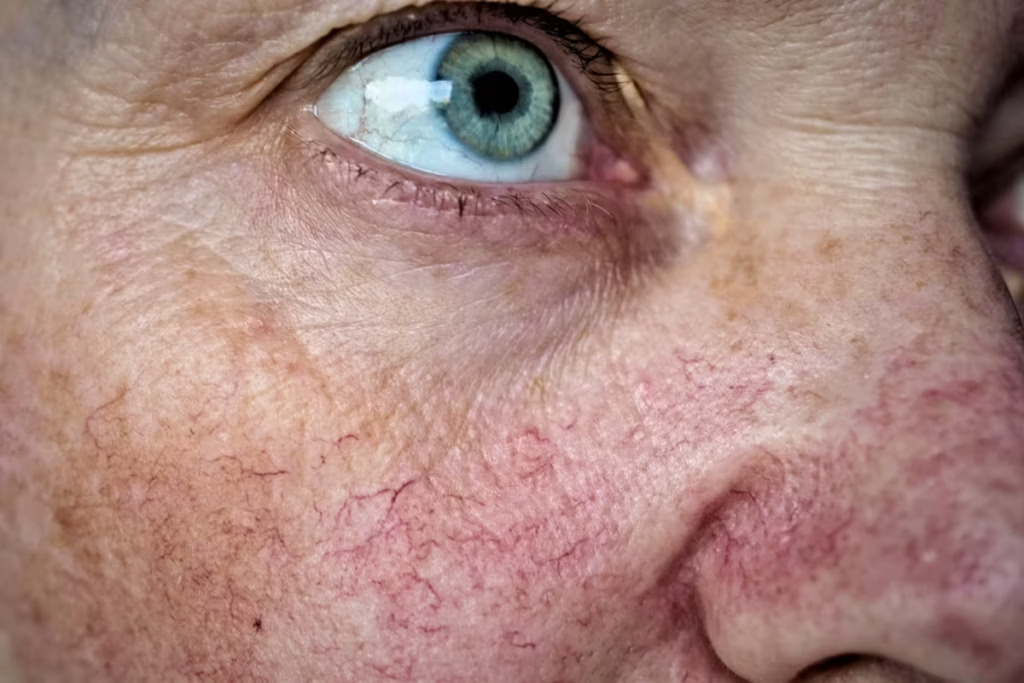
Telangiectasia, informally known as “spider veins,” occurs when the walls of small blood vessels become significantly widened or dilated. This is most visible close to the surface of the skin, where permanent purple blotches and traces of veins may be seen.
Palmar telangiectasia, which happens on the palms of the hands, can be caused by smoking due to the nicotine in tobacco which reduces blood vessel size. According to research, half of the 30 current smokers and 31.2% of 16 former smokers have palmar telangiectasia.
9. Skin Cancer
Cigarettes contain carcinogenic substances that can cause cancer. If you’re a smoker, you are more likely to get squamous cell carcinoma, a type of skin cancer.
Signs of squamous cell carcinoma could include scaly patches, bumps, sores, or wart-like formations on the skin. These lesions may be brown in dark-skinned individuals and red in light-skinned individuals. If you discover these or any other unusual textures on your skin, inform your doctor right away.
Oral squamous cell carcinoma, a type of oral cancer, is most often caused by smoking. Speak to a doctor if you experience any of the following indications of oral cancer:
- A lump or mass in the neck or throat
- Numbness of the mouth
- Loose teeth or pain around the teeth
- Pain in the mouth
- Weight loss
- Ear pain
- White or red patch on the gums, tongue, tonsil, or lining of the mouth
- Sore throat
- Trouble swallowing
- Trouble chewing
- Difficulty moving the jaw or tongue
- Voice changes
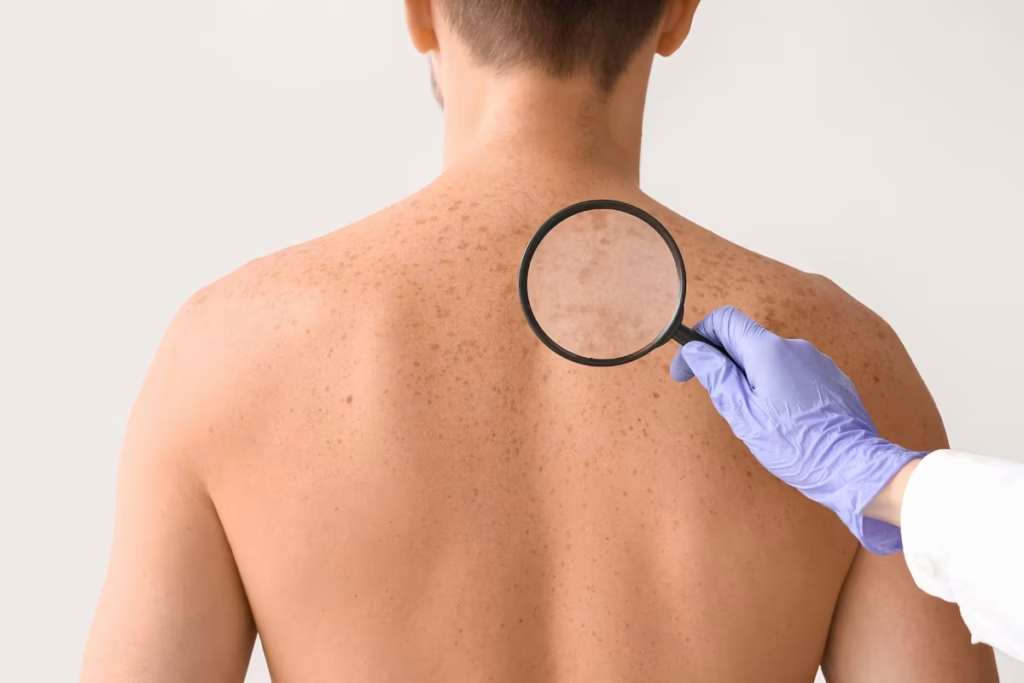
10. Mental Health Considerations
Those with skin disorders may feel embarrassed, anxious, and depressed when their symptoms become more noticeable, which can affect their self-esteem.
Your doctor can point you to a mental health specialist who can assist you in dealing with the situation.
Research has indicated that cognitive behavioral therapy (CBT) may bring positive changes to those suffering from skin conditions such as psoriasis. By tackling the emotional side of the condition and learning to look on the bright side, CBT may help improve a person’s quality of life.
How can we reduce the damage of smoking on the skin?
The best way to reduce the damage caused by smoking on the skin is to stop completely. Reversing the effects after smoking can be possible if you are able to cut down or quit smoking, including by doing the following:
Smokers’ Skin Damage Vs Non-Smokers’ Skin
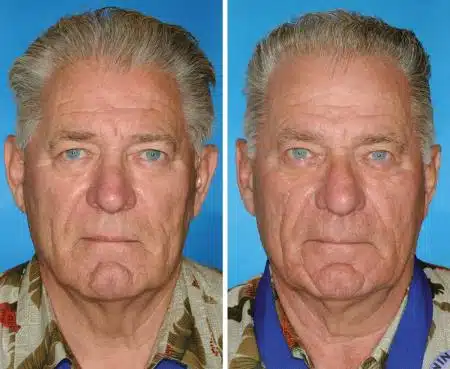
| Smokers Skin | Non-smokers Skin |
| More wrinkles around the lips | Slight aging due to the sun |
| The skin appears younger | The skin appears older |
| Facial wrinkles were more | Fewer wrinkles in general |
| More prominent skin sagging | Minimal sagging of the skin due to age |
| There was uneven skin tone in many areas of the face | Uneven skin tone in fewer parts of the face |
| More age spots | Fewer age spots |
| Deeper wrinkles and lines around the nose and forehead | Finer lines around the nose and forehead |
| Bags on the lower lids of the eyes | Lesser damage in the eye area |
What are the skin benefits of quitting smoking?
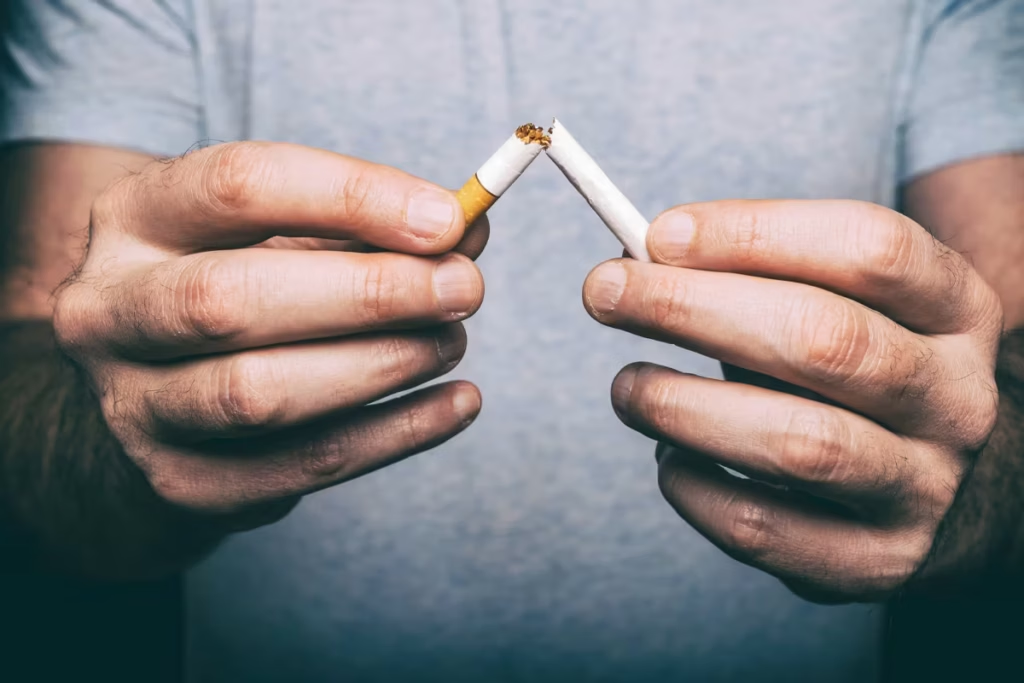
The more you smoke, the greater the damage to your skin. When quitting, the nicotine in tobacco no longer restricts blood flow to the face, allowing vital nutrients to nourish it once more.
By ceasing to breathe in the toxins from smoke, your body will begin producing elastin and collagen again, aiding in making your skin’s texture and appearance look healthier.
As you become healthier, the pale and dry skin should become less visible, and the nicotine stains on your fingers will vanish permanently. Additionally, this improved health has a beneficial effect on your skin.
When can you start to see the effects of smoking on your skin?
Experts disagree on the effect smoking has on the skin. Some say that any amount of smoking causes damage, while others argue that it takes several years and high levels of consumption to make the harm visible. The quantity of cigarettes is also a factor to take into consideration.
Smoking is known to cause wrinkles, sagging, paleness, and dryness of the skin due to its toxic contents. Any harm brought on by smoking is unchangeable but staying away from cigarettes can mitigate any future damage.
Considering a Facelift for Smokers’ Skin?
If smoking has left you with deep wrinkles, sagging skin, or uneven texture, a facelift could be the solution. At Donath Facial Plastic Surgery, we specialize in customized facelift procedures designed to restore a youthful, natural look.
💡 Why Choose Us?
✔️ Led by Dr. Alexander S. Donath, a board-certified facial plastic surgeon with years of expertise.
✔️ Advanced techniques for minimal downtime and natural results.
✔️ Comprehensive skin rejuvenation plans tailored to smokers’ needs.
📞 Schedule a Consultation Today
Call (513) 891-5438 to discuss your options with our expert team at Donath Facial Plastic Surgery in Cincinnati, OH. Your skin deserves the best care—let’s bring back your confidence!
